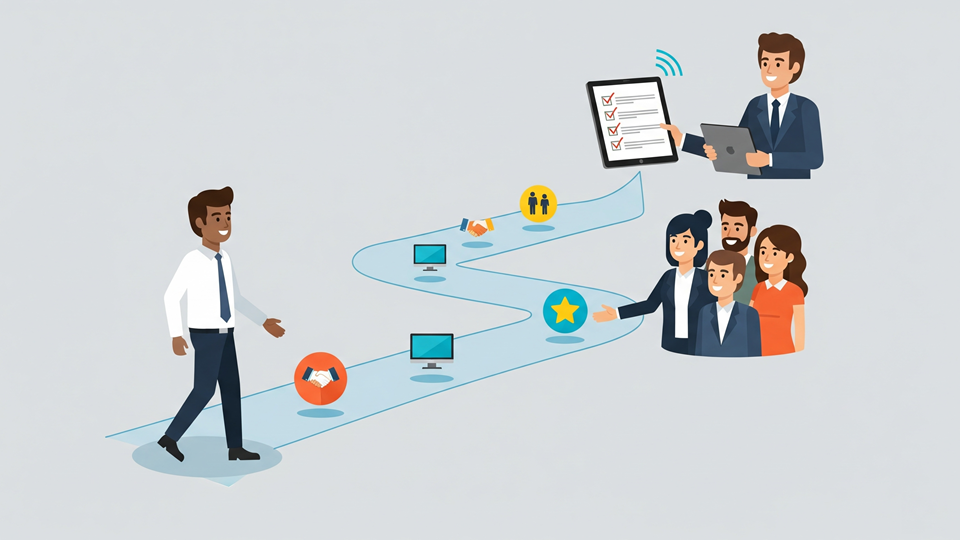Why Onboarding Matters More Than You Think
Onboarding is the process of integrating new hires into your company culture and preparing them for success in their roles. Studies show that effective onboarding programs increase employee retention by 82% and improve productivity by more than 70%. In today’s competitive talent market, the first impression you make as an employer can determine whether a new hire stays engaged or begins looking for another opportunity.
Crafting a Strong Pre-Onboarding Experience
Communication Before Day One
The onboarding process starts long before an employee’s first day. Sending welcome emails, sharing a digital handbook, or even mailing a personalized note can build excitement and reduce anxiety. For example, companies like Zapier send a pre-start checklist that helps employees set up their tools and accounts, ensuring a smooth transition.
Setting Clear Expectations
When employees know what to expect, they feel more confident. Share the agenda for their first week, introduce them to their mentor or buddy, and provide information about company culture. Transparency sets the stage for trust and engagement.
Day One Done Right
Make It Personal
The first day should feel welcoming, not overwhelming. Small gestures—like a personalized desk setup or a welcome video from the CEO—create a sense of belonging. Research shows that employees who feel included on day one are 47% more likely to stay with the company long term.
Introduce Culture, Not Just Tasks
Many employers focus too much on logistics and policies. While compliance is important, onboarding should also introduce employees to values, mission, and team dynamics. Hosting a culture presentation or team lunch can help reinforce these elements.
Structured Training for Long-Term Success
Blend Learning Methods
Effective training combines e-learning modules, shadowing opportunities, and hands-on projects. For example, Google’s onboarding program includes both structured online learning and mentorship, ensuring that employees quickly gain both technical and cultural knowledge.
Set Short- and Long-Term Goals
Encourage managers to establish 30-60-90 day goals. This framework helps employees focus on achievable milestones, while managers can provide ongoing feedback. According to Gallup, employees who receive regular feedback are 3.6 times more likely to be engaged.
Leveraging Technology for Seamless Onboarding
Onboarding Software
Modern tools like BambooHR, Workday, or Rippling can automate paperwork, schedule training sessions, and track progress. Automating administrative tasks frees up time for meaningful interactions.
Virtual Onboarding Options
In remote or hybrid settings, companies can create virtual onboarding portals with welcome videos, resource libraries, and live Q&A sessions. Microsoft, for instance, uses Teams to connect new hires with peers and managers instantly.
Measuring and Improving the Onboarding Process
Collect Feedback
Send surveys to new employees after their first 30, 60, and 90 days. Ask about what worked, what was confusing, and where improvements are needed. This iterative process ensures continuous improvement.
Track Retention and Performance
Ultimately, the success of onboarding should be measured by retention rates, time-to-productivity, and employee satisfaction scores. Companies with strong onboarding processes report 54% higher productivity among new hires.
Conclusion
Onboarding is more than just paperwork and training—it’s your chance to make a lasting first impression. By investing in pre-onboarding communication, creating a welcoming first day, blending training methods, and leveraging technology, you can transform new hires into engaged, loyal employees. Remember: first impressions matter, and a strong onboarding process can set the stage for long-term success.





